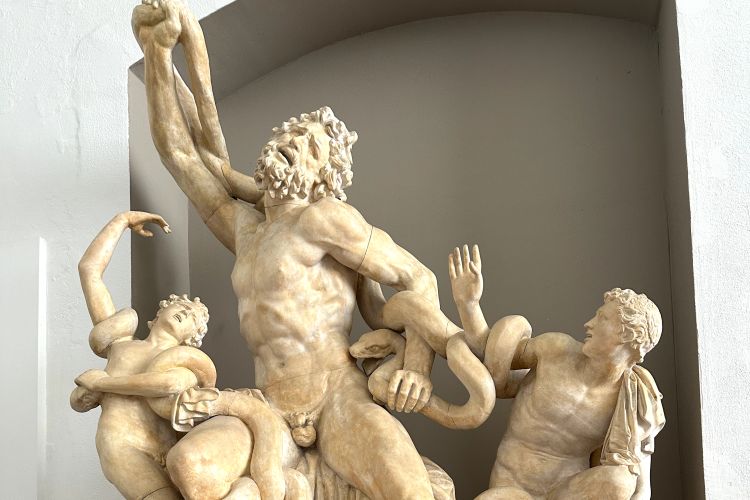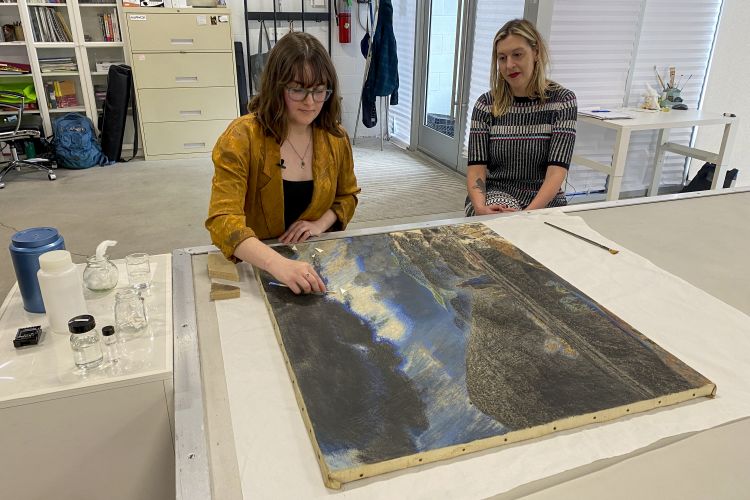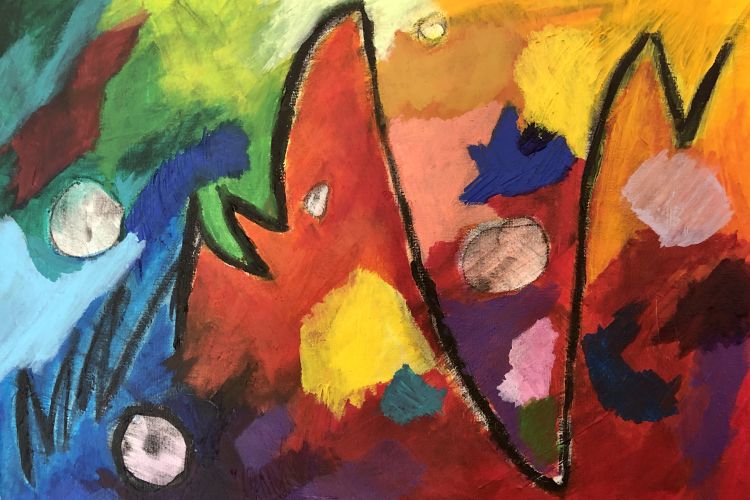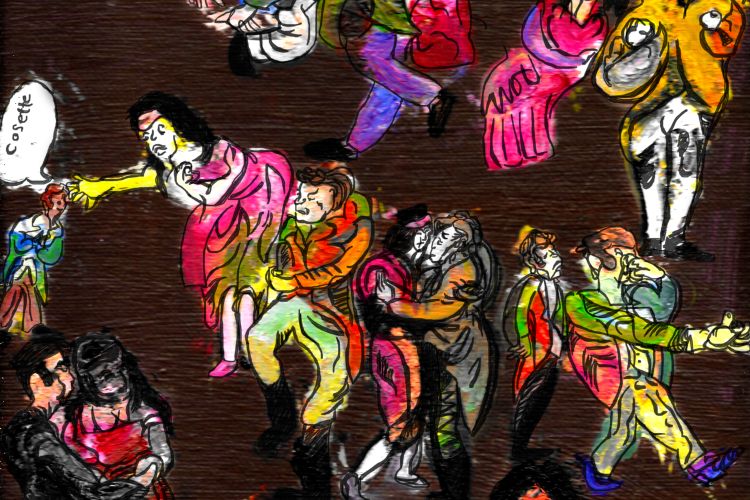STORIES FROM PAFA
Measurements in the Broad Street Studio
For the past twenty-plus years, Mike Schley’s work has been digital and small. His impact working in fantasy and science fiction publishing is large but he often found himself working on a tablet, translating the worlds that came alive in his mind to a computer screen.
But at PAFA’s Broad Street Studio, open since 2016, Schley can create work on a larger-than-life scale.
"Measure: a meditation on space and time" by the first year MFA student is a comment on the method of self-measurement and self-definition by relating oneself to their environment.
"I think about space a lot and how the individual relates to their environment," Schley said. "How we define ourselves and relationships to the people around us, and as well as the spaces around us."
CJ Stahl, PAFA’s Undergraduate Academic Services Coordinator said the studio space allows students to "expand their practice into uncharted territory, frequently responding to the challenging space, which is uniquely shaped and less suitable for conventional wall dependent works."
Schley’s Measure lives in the Broad Street studio for just a brief moment, two weeks, but that measurement of time is only a part of the installations life cycle.
The initial spark for Measure came from a class with PAFA MFA program chair Didier William.
"I started thinking about what it is we do when we measure something, or measure ourselves in relation to something else," he said. "For instance, there is a paradox that occurs when you measure the circumference of a circle. If you took a ruler and tried to measure the edge of that circle with a straight line, depending on the edge of the rule and whether it’s a ruler or yard stick, that’s going to affect and change the measurement. So it’s more of a reflection of a unit of measure or the device, than the space you’re actually measuring so in a sense that unit of measure is measuring itself. And that kind of compelled me to think about what would it take to fill a space or activate a space, no matter what size that space was."
The first iteration of Measure was a 120-foot loop of a hand-printed double-sided paper on display in an installation room in the Hamilton building. Schley then had his eyes set on a larger scale, and planned to create a 600-foot double-sided loop for the Broad Street Studio.
Hours turned into days as he worked in the print shop, cutting down rolls of paper and screen-printing sections of what would become one giant loop.
"It was funny because essentially I would squeegee one section and run down to the end and pull the paper and then run back and squeegee the next section," he said. "So it was a lot of running back and forth with these big scrolls of paper and people would come in and look at me and not know what was going on. The whole process was very Zen-like and meditative. It gave me a lot of time to relax and quiet down, and sort of think about what I was actually doing."
It then took three days to install the loop and fill the Broad Street Studio space.
"When I first walked in I wasn’t sure what I was going to do because I wanted to leave it open enough that I could see how the paper formed arcs in the space so it would actually respond to the space rather than me designing it from the get-go," Schley said. "I did a lot of thinking in my head of how I could get it to move."
The loops hung from a custom wire rigging system that Schley built, with several of the paper loops coming over the walls of the studio space.
"A lot of times folks will put artwork in a space as a display space and that’s absolutely not what I wanted to do," he said. "I’m really starting to move away from the clinical setting where you present a work, there is something wonderfully tangible about responding to work at scale that is directly affected or in conversation with the environment or with you."
Schley is hoping to continue the Measure conversation after its time in the Broad Street Studio. He said the loops are easily stored and can be reconfigured and hung for different spaces to start a new discussion.
"The thing that excites me is that I would love to take that form and have it live somewhere else in a different composition," Schley said. "Taking another space, it would need to respond to another space. It’s easily storable so I would be really excited if someone wanted to put it up in an interior installation."








